Classical Music - Part 29 - October, 2001
Jason Serinus
| Ratings: | ||
| Extraordinary | ||
| Good | ||
| Acceptable | ||
| Mediocre | ||
| Poor |
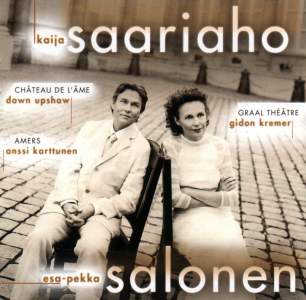 |
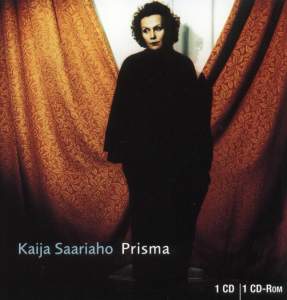 |
 |
 |
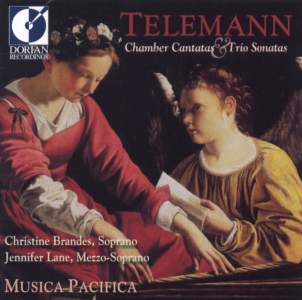 |
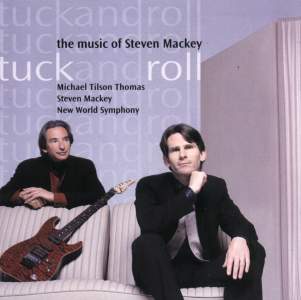 |
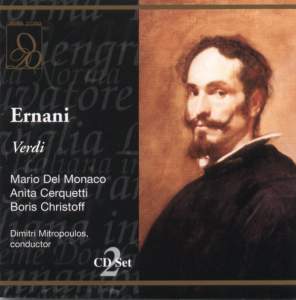 |
CASTA DIVA - ANGELA
GHEORGHIU - EMI 7243 5 57263 2 3
Performance: ![]()
![]()
![]()
![]()
Sonics: ![]()
![]()
![]()
![]()
EMI is determined to insure that dramatic soprano Angela Gheorghiu earns a place
in the operatic firmament. Stars appear everywhere, including on the front and
back covers, the spine, and the CD itself. When you open the case, an enlarged
photo of the sparkles that adorn Ms. Gheorgiu's sleeveless evening dress
surround the CD itself, as though they carry the same import as the swaddling
cloth that cradled the infant Jesus. And the brochure itself includes numerous
Gheorghiu glamour shots, with a striking centerfold unwrap destined for Vogue.
Somewhere in all of this there is the voice. It is exceptionally beautiful and
perfectly produced. Far more even than Maria Callas' controversial instrument,
its dark sound in the lower and middle range speaks of drama and tragedy. The
highs, although not always as free as the great Maria Callas' in her too brief
prime, are certainly less steely and more reliable. Coloratura ability too is on
display. And there are myriad accents and shadings, all indications of a major
artist.
The repertoire has Callas written all over it. Gheorghiu does a fine job singing
Bellini's "Casta Diva" from Norma, "Qui la voce...Vien diletto" from I Puritani,
and "Ah! non credea mirarti" from La Sonnambula; Rossini's "Selva opaca" from
Guglielmo Tell and "L'ora fatal s'appressa... Giusto ciel!" from L'Assedio di
Corinto; and Donizetti's final scene from Anna Bolena. While you may prefer a
lighter, more fragile voice in the Puritani and Sonnambula selections - Gheorgiu
is certainly no Sutherland, Sayao, or dal Monte -- or have long ago decided that
Sills' live 1969 La Scala debut recording of The Siege of Corinth will never be
equaled, there is no denying that, in the Italian repertoire, Gheorghiu is quite
possibly the finest lyric/dramatic soprano before us today.
There are some disappointments. "Una voce poco fa" from Rossini's Il Barbiere di
Siviglia falls flat; it lacks the essential coy smile, sparkle, and teasing wit
that so many sopranos, even the hardly jovial Callas, bring to it. Nor does
Donizetti's first act aria from Lucia di Lammermoor have the combination of
pathos and technical freedom that sopranos from Tetrazzini and Galli-Curci to
Sutherland, Sills, and Callas have brought to the role. But the rest of the
performances are quite fine.
When all is said and done, however, the test of a singer is whether she or he
moves you. Some people's voices, even if imperfect, never fail to touch the
heart. Such singers seem to sing from their innermost being, wedding emotion and
sound into a performance that makes music vital and alive. This is what you'll
experience when listening to Callas, Caball�, Cerquetti, Freni, Tebaldi, Olivero
and other greats sing the central Italian repertoire.
Perhaps you will experience this with Gheorgiu. Certainly, to judge from
critical reaction, many do. However, if you sense a veil, an impenetrable
divahood as it were, that leaves you observing who Gheorgiu sings more than
feeling what she's singing, know that you are not alone.
TUCK AND ROLL: THE MUSIC OF STEVEN MACKEY - NEW WORLD SYMPHONY, MICHAEL TILSON
THOMAS COND. - RCA 09026-63826-2
Performance:
![]()
![]()
![]()
![]()
![]()
Sonics:
![]()
![]()
![]()
![]()
![]()
What kind of music might you expect from a 45-year old composer who, according
to RCA's liner notes, spent six to eight hour stretches in the late 1960s
providing electric guitar accompaniment for his older brothers during their
extended LSD explorations? Include in your fantasies that, after an
international upbringing, he eventually settled in northern California at the
time when the Grateful Dead, Jefferson Starship, Jimi Hendrix, et al were the
voice of the land.
Michael Tilson Thomas, who has championed Steven Mackey's music for years,
describes it as "wacky." Mackey not only embraces the appellation, but expands
its definition to include weird, quirky and offbeat composition that features
humorous material with a "mercurial continuity." If those words don't throw a
curve ball at your sensibilities, Mackey's music most certainly will.
This music is young and brash, the journey filled with adventure, the orchestral
color as startlingly seductive as all those colors and patterns that come upon
you when you drop. And it's a good trip. "Tuck and Roll," an electric guitar
concerto featuring Mackey as soloist, is all over the place, its influences
extending from classic car upholstery to Latin music. Eating Greens, a large
symphonic work, contains seven movements with such titles as (Lethargical)
Reformation, Whim and Rigor (Homage to Henri Matisse), and Ouija (wee-gee) Baby.
In between comes "Lost and Found," a short, spicy toccata and fanfare.
This music is perfect for MTT's youthful New World Symphony. Tilson Thomas,
whose San Francisco Symphony Mavericks Festival once offered duo improvisations
with the Grateful Dead's Vince Welnick scented with marijuana smoke coming from
the second tier, established the New World Symphony in Miami Beach in 1987 as a
training academy for gifted graduates of distinguished music schools. Their
playing suggests that they have come of age. Hats off to the recording and
mixing engineers responsible for this offbeat excursion.
TELEMANN - CHAMBER CANTATAS & TRIO SONATAS - BRANDES/LANE/MUSICA PACIFICA -
DORIAN DOR-92329
Performance:
![]()
![]()
![]()
![]()
![]()
Sonics:
![]()
![]()
![]()
![]()
Here's a delightful disc of baroque music from Musica Pacifica. Composed of some
of North America's finest Early Music specialists, the group includes Elizabeth
Blumenstock, quite possibly the most "in demand" baroque violinist in the
country; Judith Linsenberg on recorder, David Morris on cello, Michael Eagan on
Archlute, and Byron Schenkman on harpsichord and organ. All play in two
world-renowned Bay Area ensembles: Philharmonia Baroque Orchestra and American
Bach Soloists.
The icing on the cake is delivered by soprano Christine Brandes and
mezzo-soprano Jennifer Lane. Their voices are wonderful and free, their
technique so accomplished that the most florid of passages are sung with ease.
The two sonatas and five cantatas on this well-recorded 77-minute disc derive
from the first 15 years that Georg Philipp Telemann (1681-1767) worked for the
city of Hamburg. During this period, he had to produce at least 140 cantatas a
year for five churches, plus numerous other compositions. Many were assembled
into volumes which Telemann published and distributed on a subscription basis.
This is the kind of baroque music on which the Musical Heritage Society built
its catalogue. A far cry from Telemann's more elaborate and complex pieces, the
works are simple in form, alternating joyful movements with those of a more
serious nature. It's not music as profound as Bach's; it's doubtful that it will
change your life. But if you are in the mood for a treat, or for background
music to an intimate dinner by candlelight, this will surely fit the bill.
SUMI JO: THE CHRISTMAS ALBUM - ERATO 8573 85819-2
Performance:
![]()
![]()
![]()
![]()
![]()
Sonics:
![]()
![]()
![]()
![]()
![]()
When music is as sweet and delightful as this, it's possible to forget all the
talk of good and evil that has been so blindly bandied about of late. Sumi Jo
has one of the most appealing, floridly accomplished soprano voices on today's
opera stage. Her sound, remarkably pure, flows out perfectly formed, its
freshness a healing balm amidst an atmosphere of hatred and righteousness. And
her expression, for the most part as simple as the music she sings, comes as a
blessed relief after insufferable weeks of righteous posturing and cries of
hatred.
Besides Sumi Jo's wonderful voice, this generous original instrument recording
of vocal and instrumental works by Mozart, Scarlatti, Vivaldi, Bach, Cr�ger,
Scheidt and others offers the orchestra the Capplla Coloniensis des WDR,
conducted by Michael Schneider. To this are added VokalEnsemble K�ln, Max Ciolek
choirmaster, contralto Barbara Ochs, violinist Hiro Kurosaki, and fortepianist/organist
Gottfried Bach.
A five star highlight is one of the finest performances yet encountered of
Mozart's youthful motet, Exsultate, jubilate, K165. Ending with the famed
Alleluja, Sumi Jo manages to sing the challenging coloratura at a remarkably
fast clip without in the least sounding rushed. Her "O Holy Night" offers one of
the sweetest high Cs you'll ever hear. Also included are two versions of
Gruber's "Stille Nacht, heilige Nacht!", one an extended duet with alto, and a
second in English for soprano, violin and fortepiano. In between come a
Scarlatti cantata, the traditional Appalachian "I wonder as I wander," the
andante from Mozart's Symphony No. 19 in E flat, K132, Vivaldi's Violin Concerto
in E major, and the choir singing Praetorius. Truly a joyous offering.
MORIMUR - J.S. BACH --THE HILLIARD ENSEMBLE; CHRISTOPH POPPEN, VIOLIN - ECM 1765
CD 289 461 895-2
Performance:
![]()
![]()
![]()
![]()
![]()
Sonics:
![]()
![]()
![]()
![]()
![]()
This is a gorgeous album. Upon first glance, it seems for the most part a
curious compilation of various Bach vocal chorales and vocal excerpts
interspersed with selections from Bach's Partita No. 2 in D Minor for Solo
Violin, BWV 1004. But upon scratching the surface, one discovers an underlay of
mathematics and metaphysics that makes for a truly mystical listening
experience.
ECM's liner notes and 80-page booklet reveal that it was common to use numbers
(represented by letters and keys) to encode riddles and hidden messages in
baroque music. In particular, according to Professor Helga Thoene of the
University of D�sseldorf, no less than a veritable theology in numbers and notes
was hidden in the sacred music of Johann Sebastian Bach.
In 1994, Prof. Thoene published an article claiming that Bach's famous Chaconne
from his Partita in D Minor for Solo Violin was meant as an "epitaph in music"
for Maria Barbara Bach. After violinist Christoph Poppen read Thoene's article,
he proposed to ECM producer Manfred Eicher a collaboration between himself and
the famed Hilliard Ensemble; the goal was to make the "hidden chorales" of the
Chaconne audible to listeners. The result is the present recording, which uses
vocal works sung one voice to a part (soprano, countertenor, tenor and baritone)
as links between the five movements of the Partita. The recording climaxes with
a unique 14-minute version of the Chaconne for Violin and Voice, in which the
augmented Hilliard Ensemble sings verses in parallel with Poppen's solo violin.
Beyond Professor Thoene's research, this deeply spiritual music, enhanced by
exceptional musicianship and ECM's usual highly atmospheric sonics,, is so
beautiful that one "gets" Bach's extra levels of meaning even without reading
the liner notes. Turn off the lights and listen. This is wonderful music.
KAIJA SAARIAHO - CH�TEAU DE L'�ME -KREMER, UPSHAW, KARTTUNEN - ESA-PEKKA SALONEN,
COND. - SONY 60817
KAIJA SAARIAHO - PRIVATE GARDENS/PRISMA (1 CD PLUS 1 CD-ROM) - NA�VE MO782087
Performances on both:
![]()
![]()
![]()
![]()
![]()
Sonics on both:
![]()
![]()
![]()
![]()
![]()
These simultaneous releases, featuring definite performances by artists who
debuted most of these works, promises further acceptance of the music of
fascinating Finnish composer Kaija Saariaho. Born in 1952, Ms. Saariaho became
known in the eighties for her work in electro-acoustics. Her more recent
compositions, seven of which are offered on these discs, are characterized by a
sometimes dark, frequently haunting air of all- enveloping mystery.
The Sony disc features three works written expressly for the soloists. Singing
in French to texts inexplicably omitted, Dawn Upshaw offers the Ch�teau de L'�me
cycle of five love songs to ancient Hindu and Egyptian texts; three are drawn
from spells for love and healing. Upshaw is fantastic, her characteristic
freshness and gorgeous vibrato providing contrast to the otherworldly nature of
these songs. The opening Graal Th��tre, written for violinist Gidon Kremer,
contains eerie moments of darkness and horror that seem disturbingly appropriate
for these times. And Amers, for cellist Anssi Karttunen and accompaniment, was
written with the composer imagining, in her own words, "the cello being a kind
of boat moving in different directions in this sea of sound of electronics and
ensemble."
Na�ve, distributed by Harmonia Mundi, offers a two-disc set. The CD contains
four gripping electronic works, variously featuring for the soprano, cellist and
flutist soloists who contributed to their first performances. Thankfully, the
vocal work, Lohn, written for Dawn Upshaw, comes complete with translations.
Most compelling is the Six Japanese Gardens cycle for percussion and
electronics, which realistically conveys the composer's "series of impressions"
experienced while seeing sacred gardens in Kyoto. The bonus Macintosh/PC
readable CD-Rom offers a deeper understanding of Saariaho's work via discussions
with instrumental soloists and musicologists, an interactive music game composed
specially for the disc, and an accessible analysis of the Sony disc's Amers.
Great music which unites ancient mystery and ritual with a thoroughly modern
acoustic landscape.
NOTE: Optional 8th CD review. This review was supposed to end the last set. You
posted the cover scan, but not the review. I think the error was mine. I pasted
it into the wrong review set, and didn't send it along.
Preference? Keep the scan in the last set, and add the review to that one. Keep
this one at 7 CDs.
VERDI: ERNANI - ORCHESTRA AND CHORUS OF THE FLORIENCE MAY FESTIVAL/DIMITRI
MITROPOULOS COND. - ALLEGRO OPD-1287 (2 DISCS)
Performance:
![]()
![]()
![]()
![]()
Sonics:
![]()
![]() (live performance)
(live performance)
This distinguished live recording captures a June 25, 1957 Florence May Festival
performance of Verdi's early opera Ernani. The performance features an all-star
cast: soprano Anita Cerquetti, tenor Mario Del Monaco, bass Boris Christoff, and
conductor Dimitri Mitropoulos. The disc's value is enhanced by the fact that
both Cerquetti and Mitropoulos had brief careers, leaving far too few
recordings.
The star of the show is Cerquetti. A huge woman blessed with one of the most
extraordinary Verdi voices on record, she sings an "Ernani, involami" for the
ages. It is hardly the fastest; nor does it boast a trill. But Cerquetti offers
a power, grace, and strength of expression that have rarely been matched by
sopranos who dare to venture into this repertoire. The voice is absolutely solid
from top to bottom, as strong as steel, yet remarkably beautiful. And the
feeling of drama and suffering at its core is absolutely ideal for Verdi.
Mitropoulos, too, is wonderful. One is aware of the lightest of accompaniments
under Cerquetti, allowing her the freedom to express herself as she wishes.
The great Boris Christoff is, of course, excellent. Some may prefer Christoff
more in Russian repertoire than Verdi, but there is no denying the power and
beauty of the voice. As for Del Monaco, he is very much Del Monaco, alternately
singing, bullying and aspirating his way through the music. Some people love
this approach; others, this reviewer included, find it trying.
But it is for Cerquetti and the conducting that one will want to own this disc.
Any hardcore Verdi fans who are not familiar with Cerquetti are urged to snap
this one up. You won't get text and translations - you won't even get
biographies of the singing - but you will get a great performance and quite good
sound at a reasonable price.
-
Jason Serinus -
Return to Table of Contents for this Issue.

